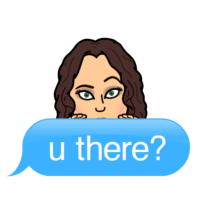
Educators – you matter. You cannot be replaced by digital resources, educational games, or paper packets of worksheets. Those items do not have a soul, they do not have the human touch. And I see you. I hear you. I know that you are working tirelessly to connect with your students. And I also know that your heart aches because there are learners you have not yet been able to reach. Perhaps some students are not engaging in distance learning, others may not responded to any of your digital messages. Please know…you are making a difference. And you are not alone in this.
We are in the midst of a global pandemic, one that took most of us by surprise. Educators from across the globe pivoted quickly to provide educational opportunities to those they serve. But many are wondering why their students are absent. Please know…if students do not show up to your video calls, if they fail to answer your attempts to communicate…this is not your fault. It is time to focus on that which we can control, and give ourselves grace when we face factors that are not within our power to change.
Identify Barriers
Why might our students be disengaged? What is causing them to remain silent? It is often helpful to consider potential challenges our students and their families are facing. This allows us to propose methods for supporting our learners and communities. If we pilot a small change that engages one more student in learning than was the case a week ago, we have succeeded in making a difference.
Challenges and Corresponding Supports

Each of our students is a unique individual living in a context that is not identical to any other child. But I do not believe that any of our students who entered our classrooms in the fall expected to be learning at home in the spring. While each is different, all can benefit from a sense of familiarity and empowerment during this time of uncertainty. When individuals experience trauma and/or stress, the amygdala (part of the brain responsible for emotions) goes into hyperdrive. This places cognitive processing abilities on the back-burner as we often feel out of control. The great news is that the brain was built to repair itself. We can support all students during this time by fostering consistency, human connection, and giving our learners choice – allowing them a sense of control as they select options for methods of both learning and expressing that learning.
Will we be able to reach all of our students? Will we have 100% participation during distance learning? Most likely not. But I see you, educators. I recognize your heart for those you serve. I am certain that in seeking to provide supports to meet the needs of your students at this time, there are learners in your midst who will rise up with more confidence than they had before. And the same will be true for you.
